PHOTO: ERIKA LARSEN
A forested path leads to the Shack.
In August of 2017, I was invited to join a panel at the Mississippi Book Festival in Jackson that honored the life and work of the Oxford writer Larry Brown. I quickly realized I’d be the only one on the panel who hadn’t known Larry, as he had passed before I broke through. There would be Ron Rash, another of my heroes. Mark Richard, who had been one of Larry’s best friends. And Richard Howorth, the owner of Square Books, would be the moderator, his own story of the discovery and then friendship with Larry the thing literary dreams are made of.
I had never been so anxious about an event, somehow feeling that I didn’t belong, or that I would sound stupid, or that I wouldn’t be able to give Larry the kind of sentiment he deserved. I saw the packed house, the standing-room-only crowd around the fringes. I recognized a horde of Oxfordians who had made the trip for this event, people who were close with Larry and had been heartbroken when he had unexpectedly died. I seriously considered ducking out the back door.
Richard broke down giving the intros, as he recalled Larry walking into Square Books, this blue-collar guy with a thick Mississippi accent, hungry for what to read, then later sharing his own short stories with Richard, and how special it was for a bookseller and a new writer to embark on such a true relationship. And then Mark broke down talking about a letter Larry had written him while Larry was staying at his house. I had a fifth of Bulleit bourbon in my bag beneath my feet that I had brought to give Ron as a thank-you for his blurb for Desperation Road, and I damn near reached down and cracked it open and swigged.
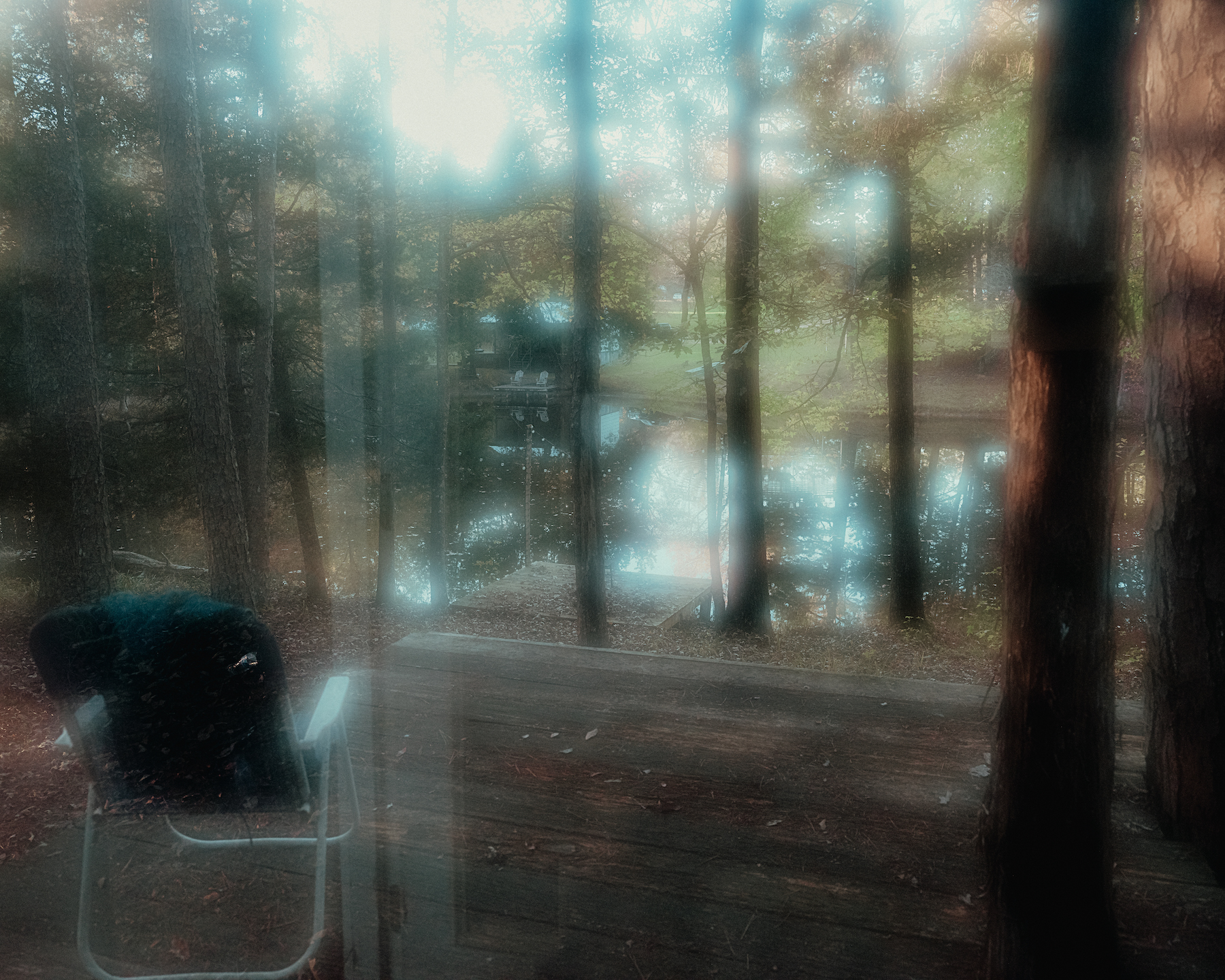
PHOTO: ERIKA LARSEN
A view of the pond from Larry Brown’s writing cabin, on his family’s Mississippi property.
It struck me what I should do—let Larry’s words speak for me. I had brought a copy of his 2001 essay collection, Billy Ray’s Farm. It was a book I had read over and over, in particular the piece titled “Harry Crews: Mentor and Friend.” In the essay, Larry writes about the influence of and friendship with the writer Harry Crews and what he learned from Harry—perseverance, guts, commitment. All those things a writer needs that can’t be taught. That essay kept me going through years of rejection, through years of doubt. Harry Crews had been the writer who inspired Larry, and in his telling of that relationship, Larry had inspired me. I read two pages of the essay to the audience. I let Larry do the talking, my anxiety fell away, and it felt good.
When the event was over, a guy wearing a trucker’s hat pulled down tight approached me. He wore a T-shirt, and his arms and face were tan, and he had a familiar look. It was Shane Brown, Larry’s younger son, and the spitting image of his father. Shane thanked me for the things I’d said about his dad, and I could tell he was so satisfied by the big audience who wanted to hear more about Larry. We talked then, we talked some more over beers later that evening, and we made plans to have more beers once we got back to Lafayette County. What I didn’t know is that by meeting Shane, I was in for a whole lot more.
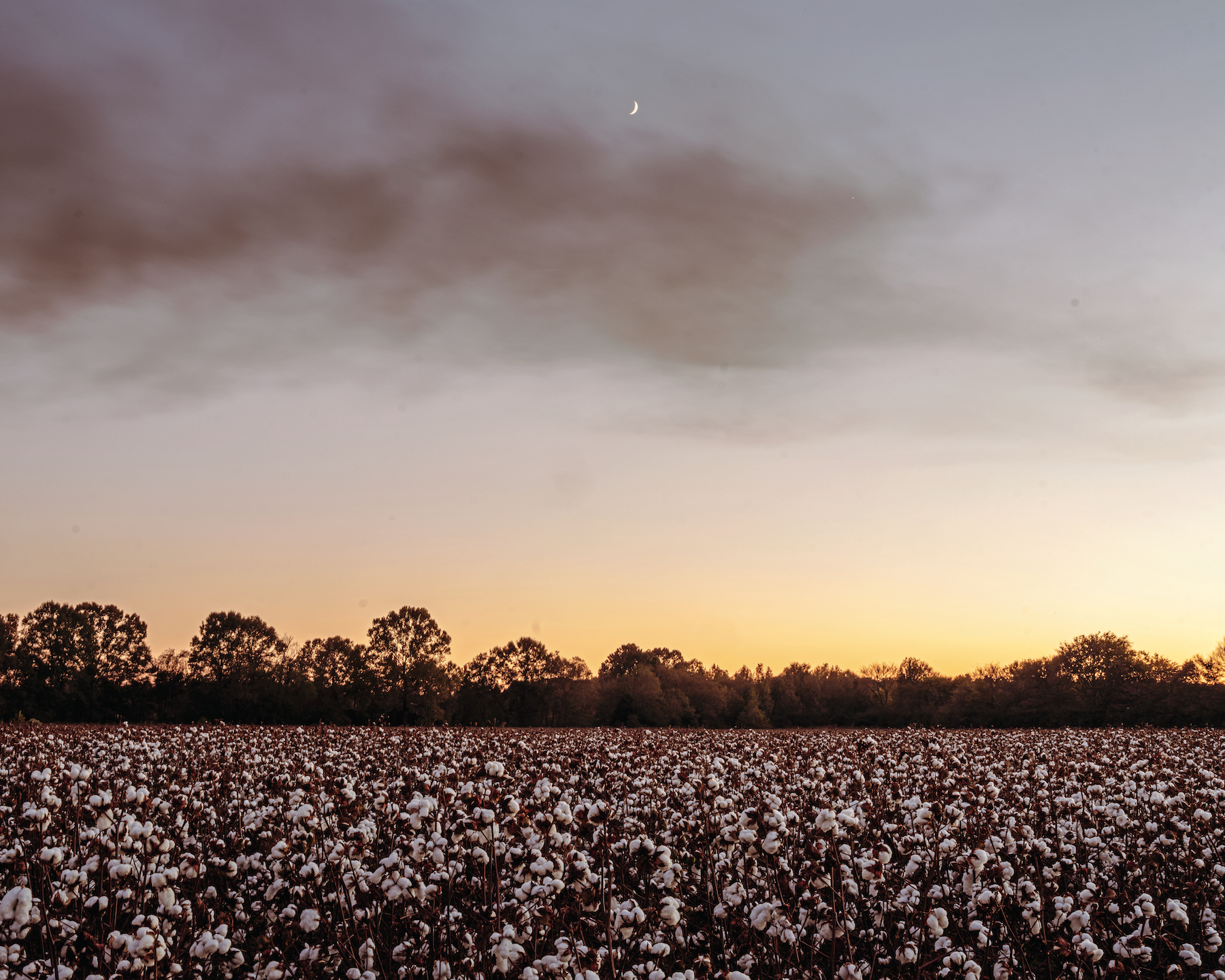
PHOTO: ERIKA LARSEN
A cotton field across from the Brown family’s farm.
Tula, Mississippi, is Larry’s home, his back roads, his people. It sits about a dozen miles outside of Oxford and is a small agricultural community of rolling hills and deep skies. The Brown family land is the home of the family dairy, where Larry’s sons, Billy Ray and Shane, make the best damn chocolate milk in the entire world.
The last essay in Billy Ray’s Farm is simply titled “Shack.” After years of publishing novels and doing book tours and all the things necessary in the grind of being a writer, Larry was finally able to build himself his own writing space on a piece of land he had purchased in Tula years before. He had dreamed of getting out of his carport office—“the Cool Pad,” as he called it. Larry had transformed a carport storage closet into a work space, cramped and cluttered with books and drafts of stories and essays and cassette tapes. He had created something official, complete with the name taped across the door. But he imagined something even better.
The “Shack” story is Larry’s description of clearing land, fighting back the briars and thorns, spraying the poison ivy and sumac, and sweating through the hot August days to make a spot between two big pines, a tall cedar, and a couple of elms that would fit a twelve-by-ten-foot tiny house. Or, what came to be the Shack. You can feel the heat as he sprays poison on the weeds and brush, you can feel the frustration of trying to level the beams between the trees, you can hear the frogs and crickets singing through the twilight as Larry works into the night. And you can feel the pride in every ounce of sweat, every hammered nail, every step closer to the Shack being completed. He writes:
“The idea of building it had always been in my head. It had probably been in my head for ten years…I felt good enough to do the physical labor that would be required and be able to put in the hours it would take.” Which sounds a lot like writing a novel.
Just as with the Harry Crews essay, I had always related to “Shack.” I worked with my hands, I did three-man jobs by myself on a slew of home renovation projects, I hoped to one day be the kind of writer who could have my own four walls somewhere in the woods.
But Larry died of a heart attack in November 2004. He was only fifty-three years old. He never got to write in the Shack the way he planned. He never got to sit there with his typewriter thumping as the morning sun streaked through the trees and the gray heron swooped across the water. He didn’t get to watch the trees grow and the seasons change in the place he worked so hard to create.

PHOTO: ERIKA LARSEN
Shane Brown (left) and Michael Farris Smith.
I got back to Oxford after the festival and called Shane, and he asked me to ride out to Tula. Let’s drink some beer, he said. I have some stuff to show you.
I turned up the gravel driveway in late afternoon. The driveway leads to the Brown Family Dairy and the houses of both Billy Ray and Shane and their families. There is always a cooler of Bud Light somewhere around the place and we grabbed a couple, I got a tour of the dairy, I met Billy Ray, and there were cigarettes and beer and the winding down of another day of hard work in Tula. And then Shane and I hopped in his truck and we took a ride.
It was that perfect hour of the day, the gentle shifting between light and dark. The gloam. We rode and talked about books, about football. And then Shane asked if I wanted to see the Shack.
“The Shack?” I asked.
“Yeah.”
“Hell yes.”
After a few more bends in the road, we arrived at the place. The truck turned onto the property; another gravel road led down a slope and toward the pond. We got out and I looked around. The place appeared clean and well-kept, the hillsides covered in thick green grass and free of the brush and trashy trees that I had read about. The pines and hardwoods stood tall and gave rich shadows across the coming night, and the night birds sang and frogs croaked and the whole thing seemed like some wishful photograph. Across, on the other side of the pond, buried between the pines and the tall cedar and the elms, stood the Shack.
We walked across the levee, and Shane talked about all the work his father had done. All the things he had helped him with. All the times they had nearly fallen off the roof trying to get it pitched just right. We crossed a little bridge necessary to get over the gully for the runoff from the pond, and then we moved up the slope and stepped onto the deck of the Shack. I stared across the pond. Sipped my beer. Shane lit another cigarette. The last of the light sank away.
“I can’t believe I’m standing here,” I told him.
He just grinned.
We stepped inside. Larry’s typewriter was still there. So was his guitar.
“You can take some pictures if you want,” Shane said.
But I said no. I didn’t want any pictures. I wanted to keep it for myself. It felt like a moment I had been walking toward, uphill, for a long time. Shane talked about the room. Explaining how bad Larry wanted the windows that rolled out. How he wanted the steep roofline. How he wanted each little detail of trim and color. And how he wouldn’t be satisfied until he got it just right.
And then he hit me with the big one.
“You can come out here and work whenever you want.”
“What?”
“Yeah,” he said. “Just come on whenever you want to.”
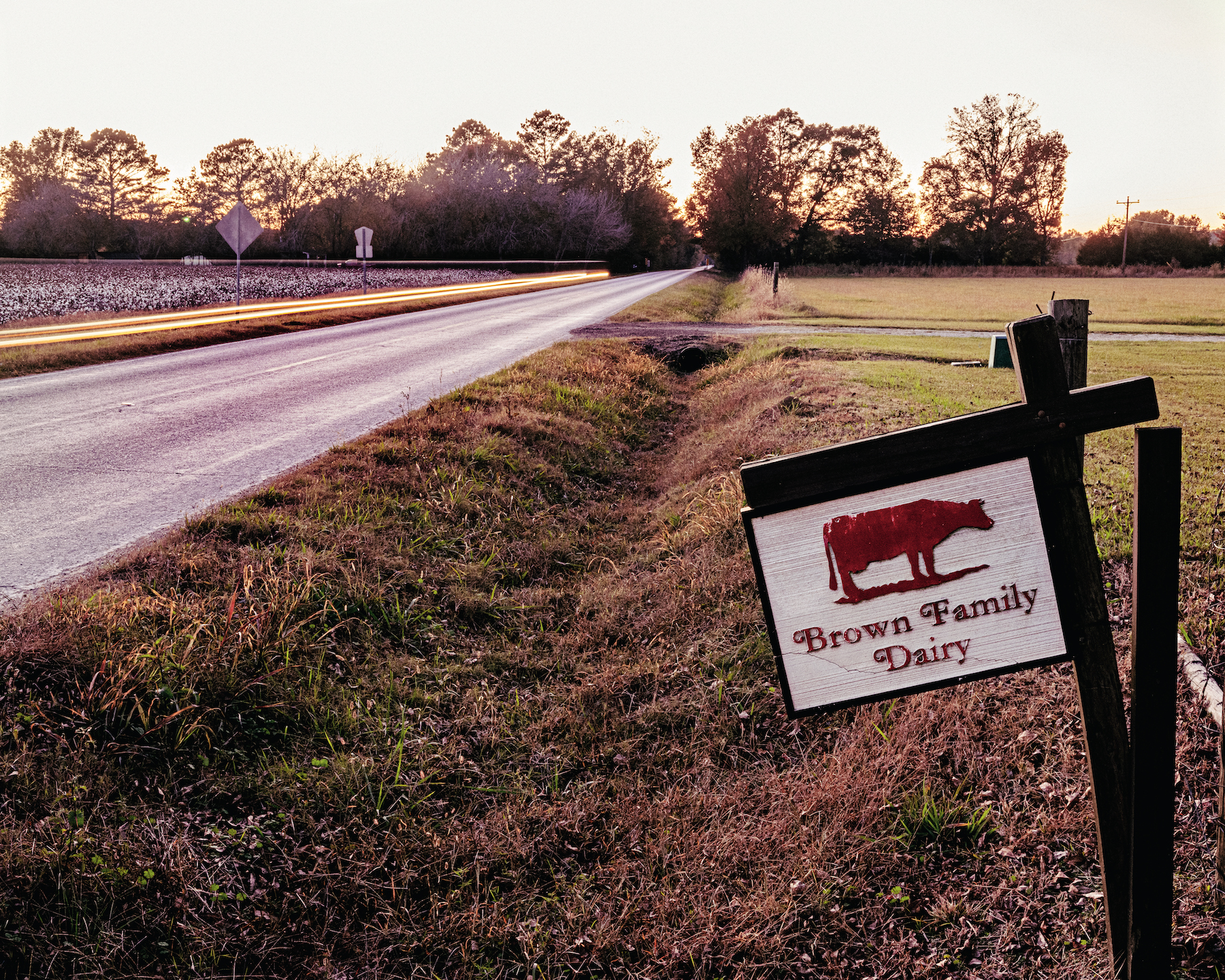
PHOTO: ERIKA LARSEN
The road to the family farm in Tula, Mississippi.
I couldn’t do it. No way could I sit down in the Shack that Larry Brown built for himself and do anything creative. I imagined his shadow peeking over my shoulder. I imagined the strong right arm of his literary muscle poking me and telling me to get out of that chair.
I still drove out there to see Shane. I still drove past the Shack sometimes in the morning, going well out of my way on the commute to my studio in Water Valley. I thought about Shane’s offer for more than a year.
Then one spring morning, after I hadn’t been to the Shack in several months, something pulled me out there. I got out of my Jeep and stared across the pond. Shane and Billy Ray are the hardest-working dudes I know, and their hours are pretty well accounted for, so the Shack had fallen into neglect. The roof and the deck were covered with pine straw, leaves, fallen limbs. Cobwebs and dirt dauber nests littered the windows. Vines climbed the walls and crept up the steps. I walked across the levee and went inside, and it was more of the same. Cobwebs and a layer of grime on the windowsills, the desk, the floor, the chair, everywhere.
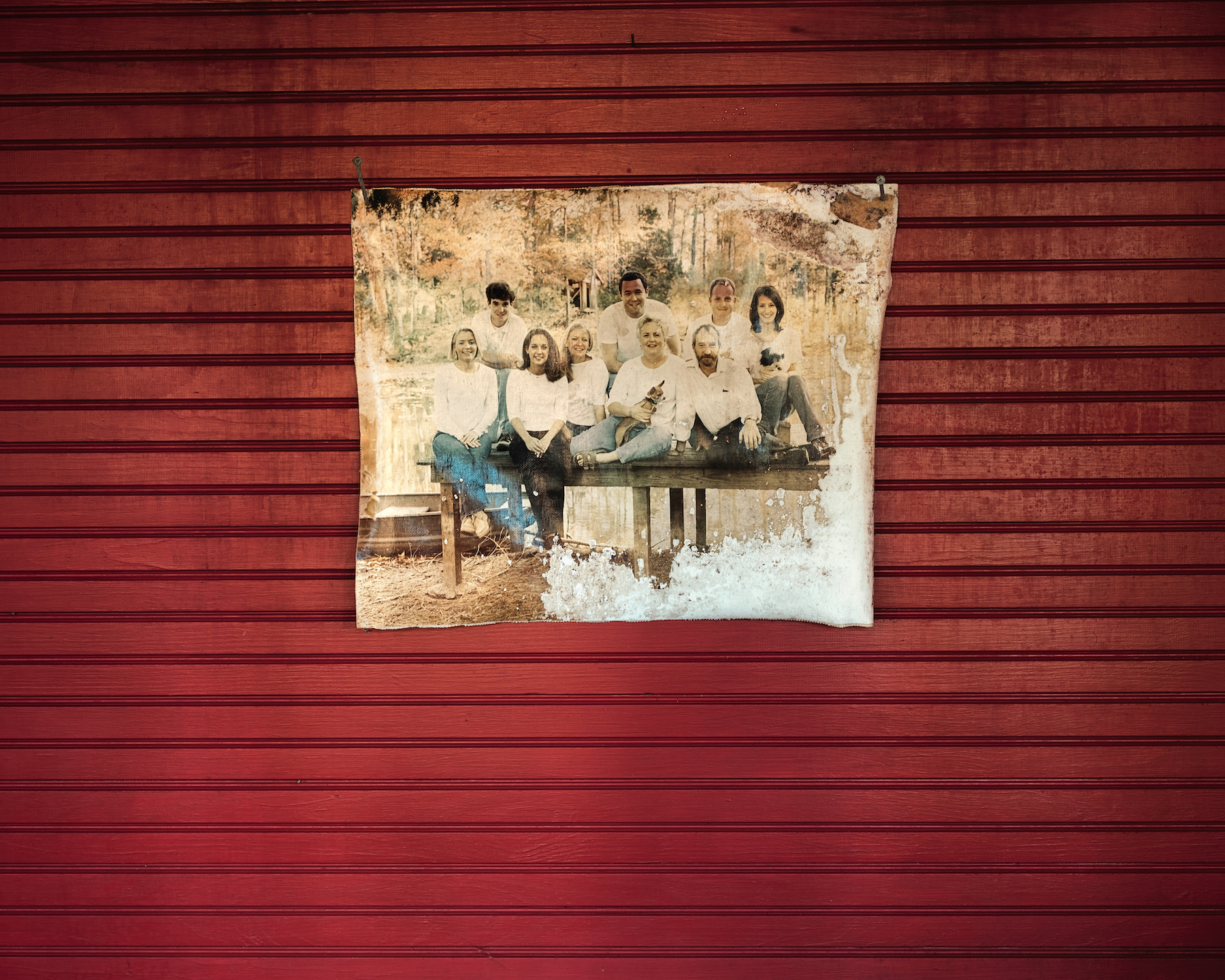
PHOTO: ERIKA LARSEN
Inside the Shack, a portrait of Larry Brown’s family and close friends.
The next morning, I showed up with a bucket of cleaning supplies, a broom, a rake, and a leaf blower. I climbed a ladder and removed limbs and a couple of inches of straw and leaves from the roof. I swatted cobwebs. Knocked dirt dauber nests with a hammer. Cleaned the windows. Raked the accumulation of several seasons of leaves from the deck. Wiped away the grime and then wiped away more grime and then a little more. The work felt good. The air was cool in the morning when I began and warm by midday, and I broke a sweat and got good and dirty, and every now and then I’d sit on the deck with my legs hanging off and watch the turtles pop their heads up from the pond. I was happy to do what I could for such a shrine.
And then the very simple thought crossed my mind—Larry built this place for someone to write in. And here you sit. Why don’t you?
I could not think of a good reason not to. Somewhere in the middle of the work I was doing to clean up the Shack, the weight of it all had fallen away. The idea of sitting there and working no longer felt cumbersome. It felt like a gift.
That was three years ago. Since then, I have written the screenplay adaptation for The Fighter, a story for an anthology, and the revisions to Blackwood and Nick while sitting in the Shack. There is a serenity in working there that I cannot explain. As Shane says, you can hear better out there.
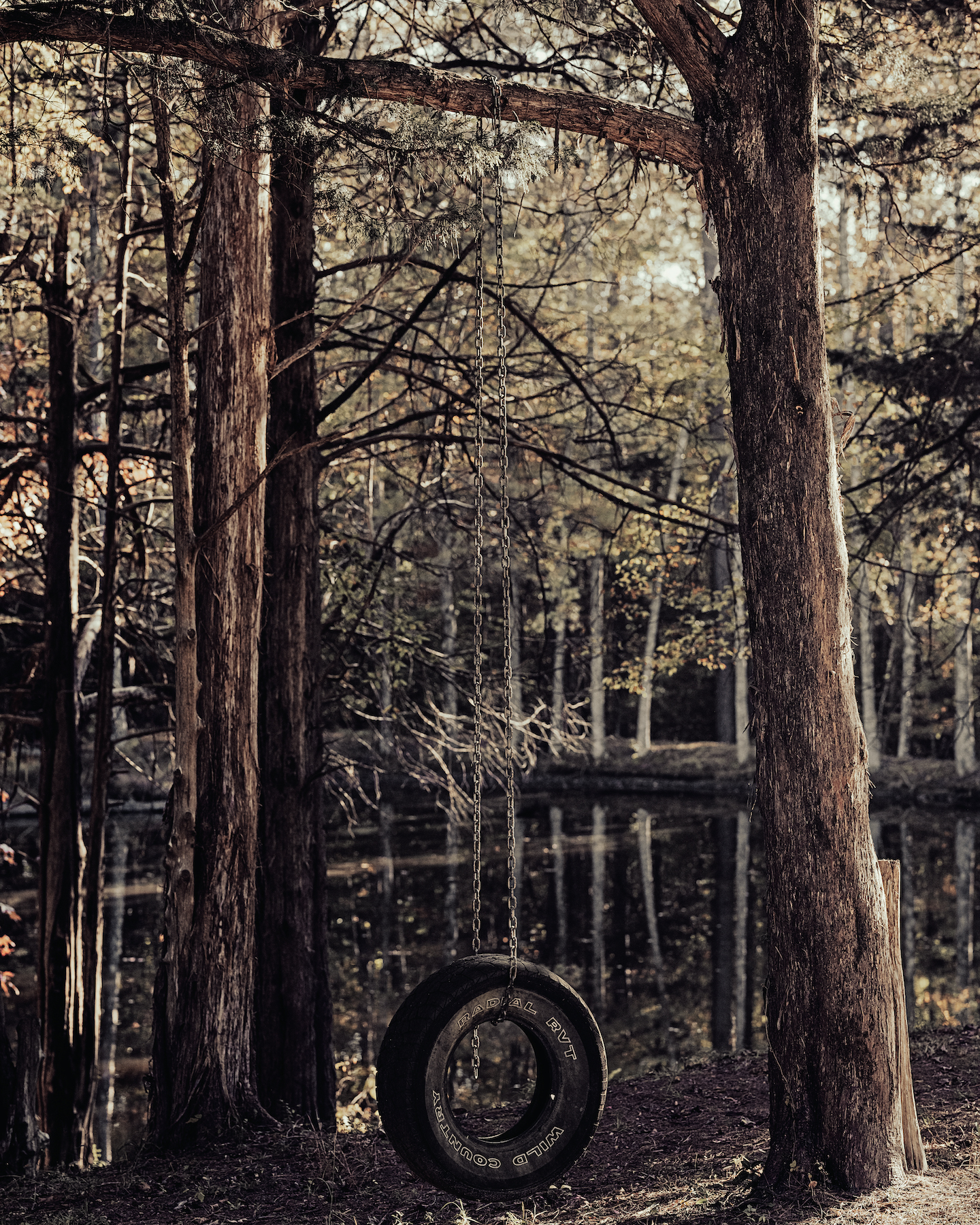
PHOTO: ERIKA LARSEN
A tire swing hangs by the pond.
On my third day back, I opened the door and found a printed story on the desk: “George” by Shane Brown. I picked it up and smiled. I’ve read Shane’s writing, and there is something in his voice that is direct, honest, and true. It excited me to see something from him. And it’s both exciting and reassuring whenever I walk into the Shack and see Shane’s cigarette butts because I know he has been there the night before, putting down his own words.
I walked out onto the deck and began to read “George.” There is a lot of Larry in his style and cadence, and that distinct Brown voice seemed to echo across the pond. “George told me that Bobby told him that he thought his wife may be cheating on him. But Bobby wasn’t for sure. I had only one beer in me by this point and that wasn’t enough for what I was fixing to have to listen to. I was already wanting another beer just to try to catch up to my day, and to maybe feel even sorrier for this son of a bitch than I already did.”
Poor George, I thought. Shane makes it tough on him, just as Larry would do.
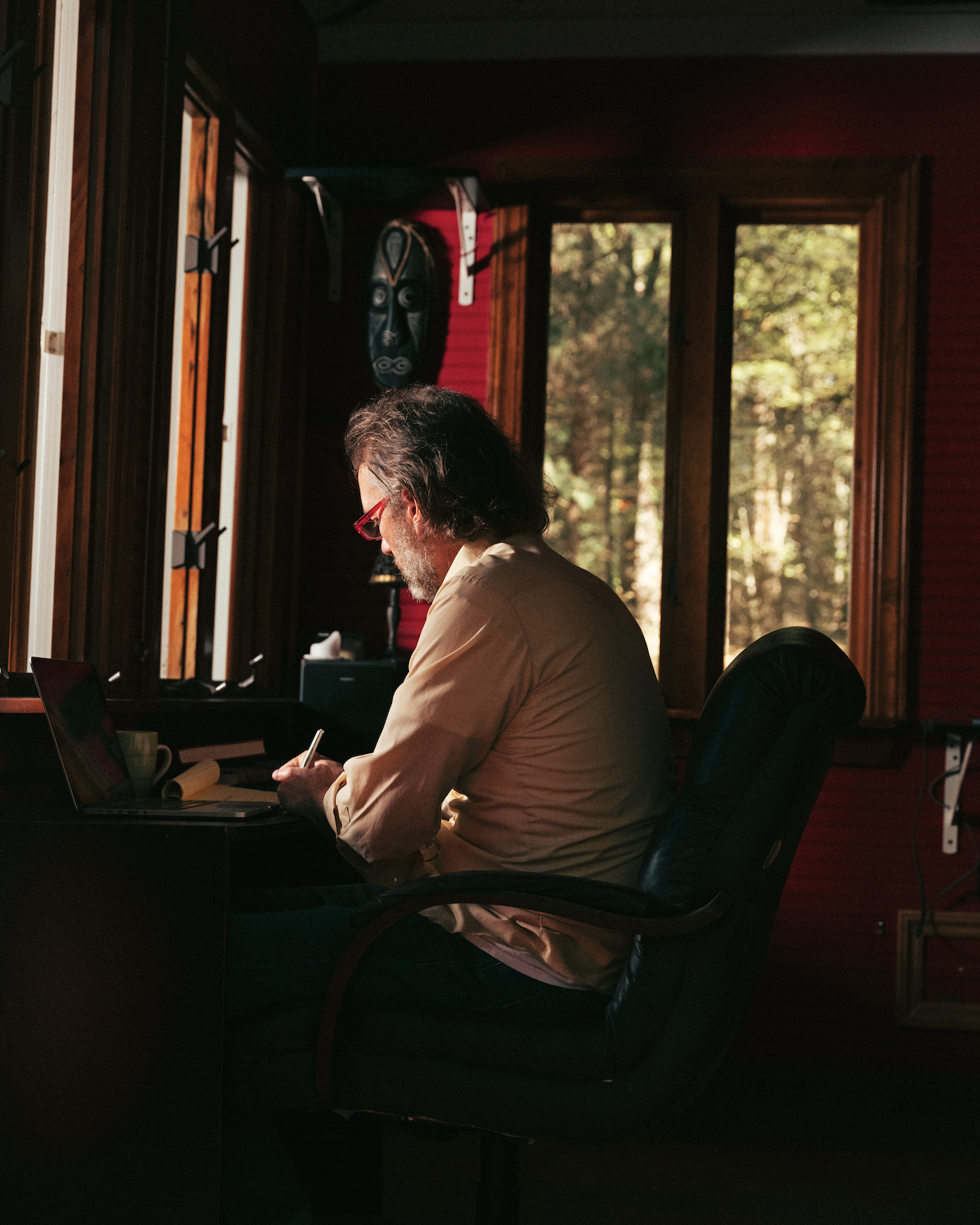
PHOTO: ERIKA LARSEN
Smith writes in the Shack.
I am often asked, did you know Larry Brown? I can’t say I’m exactly sure how to answer that anymore. Did I smoke a cigarette with him or sit with him on the balcony of Square Books?
No.
But literature and art give us the opportunity to know people in more ways than the flesh and blood. And they reach across the years, across generations. I never stood in the same room with Larry, but I know his part of the world. I talk about his influence whenever I can and hope that his books will stay alive. I read what Shane writes and I hope to inspire him the way that his father inspired me. I’m still a little awestruck at the Shack. Something would be wrong if I wasn’t. But Larry built this place for someone to write in. And I am grateful to move some words through it.
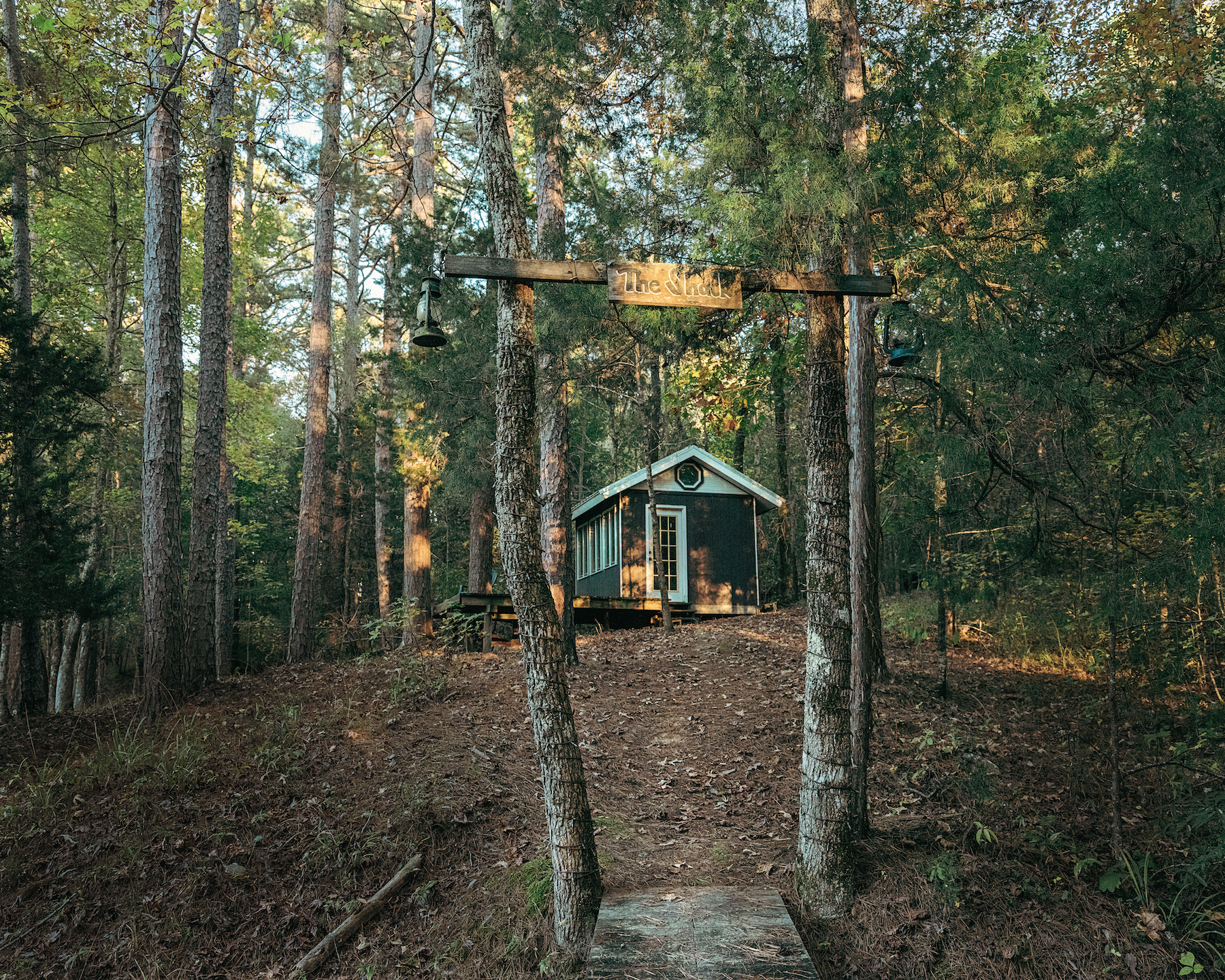
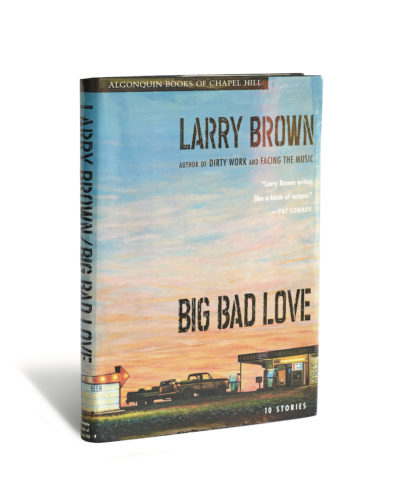
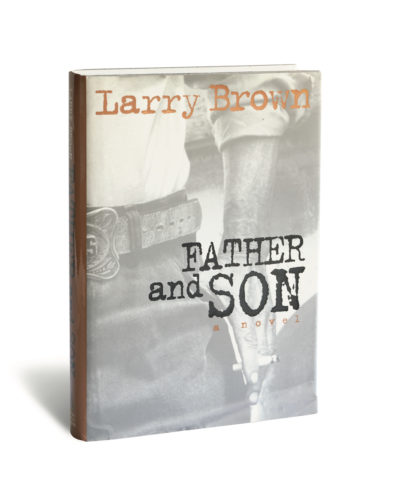

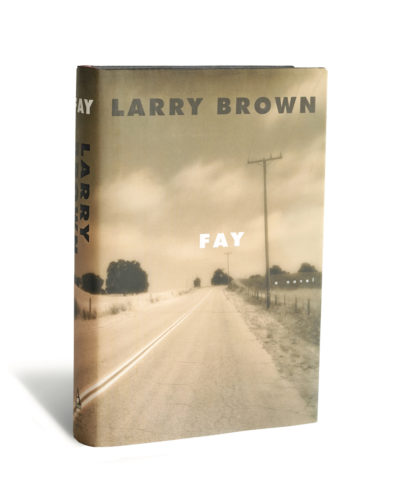
No comments:
Post a Comment